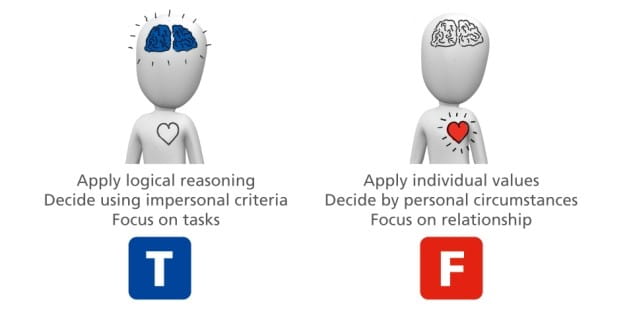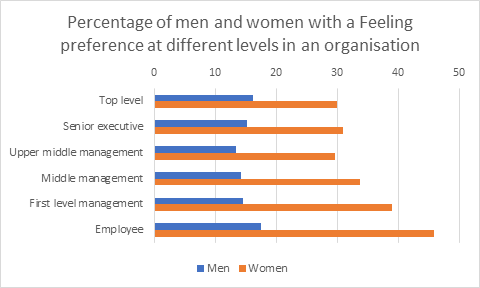Personality, gender and the glass ceiling
John Hackston, Head of Thought Leadership
Women form half of the UK population, yet less than 5% of CEOs of Fortune 500 companies are female. In 2018, only 6.3% of heads of state were female and most nations have never had a female leader. What’s more, there are fewer female CEOs of Fortune 500 companies than there are male CEOs named James.
Plain old-fashioned sexism could be part of the reason for this, but other factors have been suggested. Women are more likely than men to have a more interpersonally oriented decision-making style. This kind of leadership style may lead to more effective leadership but, unfortunately, people-oriented leaders may be seen as less competent by others. Here at The Myers-Briggs Company, we wanted to see if differences in personality was related to the “glass ceiling” problem.

First, we looked at data from over 600,000 people who had completed the MBTI questionnaire online. We did find, as we unfortunately expected, that women were significantly under-represented at higher levels in organisations, and over-represented at lower levels. Those at the top level were 2.5 times more likely to be men than women; those at ‘employee’ level were 1.5 times more likely to be women than men.
One of the dimensions of the MBTI instrument, Thinking–Feeling, is about the way in which you tend to make decisions – do you prefer to make decisions in an objective logical way, on the basis of impersonal criteria (Thinking), or do you prefer to take a more values-driven approach, taking individual personal circumstances into account (Feeling)?
In line with other research, we found that women were significantly more likely than men to prefer the values-driven Feeling approach.

It was in the interaction between occupational level, gender and decision-making style that the results really caught our eye, however. For men, the proportion of people with a Feeling preference did not vary much between levels. For women, the higher the occupational level, the lower the proportion of those with a Feeling preference. The percentage varied from 46% at employee level down to just 30% at top level. This suggests that for women, it may be more difficult to be promoted if you have a Feeling preference, but for men it doesn’t matter – all things being equal, you are just more likely to reach a higher level.
So, 70% of women use the Thinking preference at the top leadership level- a preference that is usually more common in men. Although there is evidence that the Feeling approach can make for a very effective leadership style, organisations may see this approach as less valuable, and this might contribute to fewer women being promoted to higher levels. For organisations, this pattern means they are less likely to benefit from values-based decision-making styles at the top levels.
What can we do about this? Those of us working with organisations have a role to play in helping our clients to see why the values-based approach to decision-making can be useful and valid. Instruments like the MBTI assessment, which promote diversity and an understanding of others, can be effective here.
The Myers-Briggs Company presented this research at the European Association of Work and Organizational Psychology conference 2019.